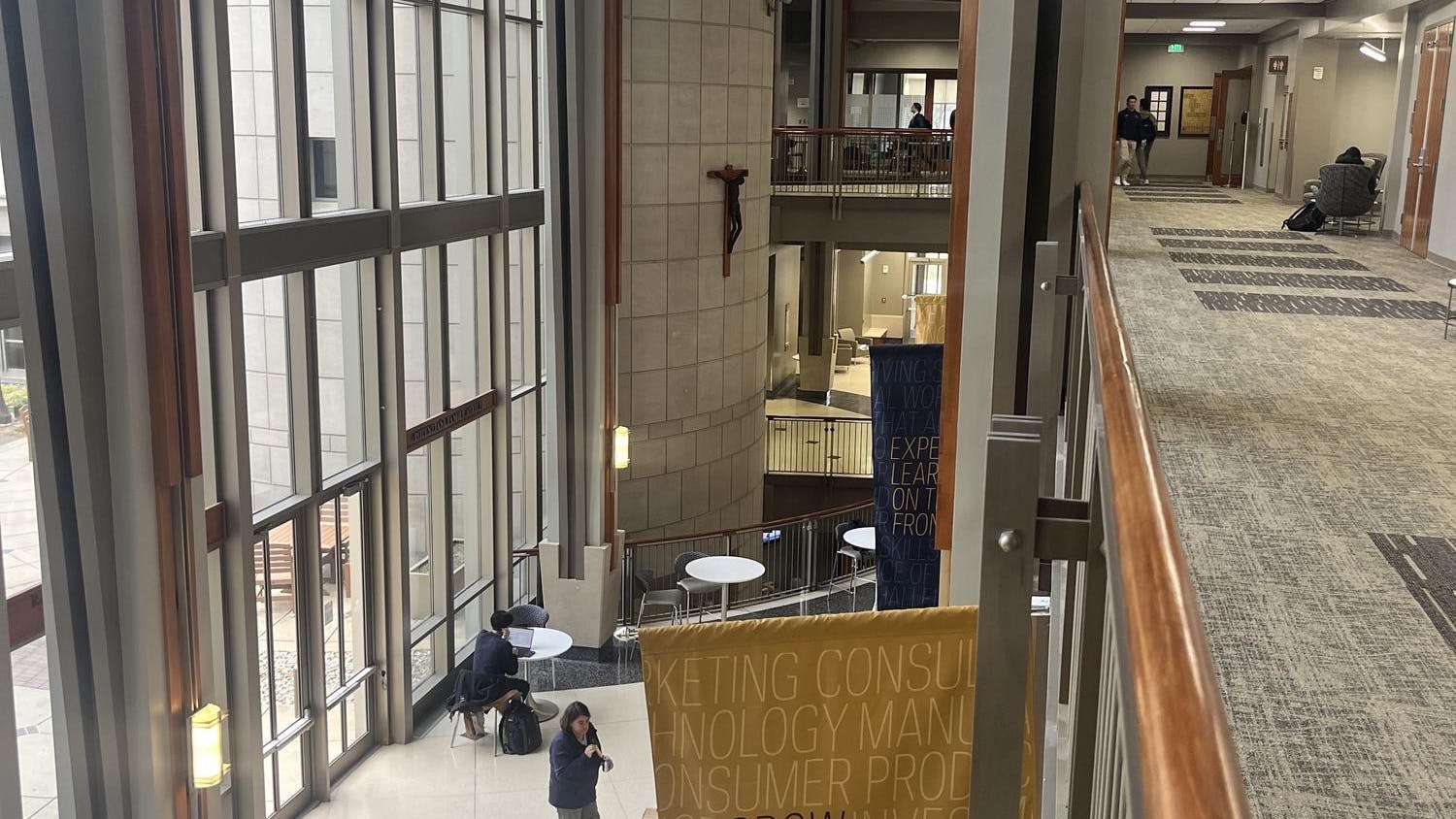Over the summer, hundreds of thousands of students from all over the country, including Notre Dame, Saint Mary’s and Holy Cross, applied for and now carry the burden of student loans. This annual rite of passage seems traditional at this point, ending with graduating and repaying student loans for decades afterwards.
However, the Biden administration hopes to put an end to the phenomenon of overwhelming college debt for those most in need and who want a college degree.
“The Biden administration has prioritized the student loan problem as part of their administration’s strategy. And when I say problem, that is to say around students accruing enormous amounts of debt, especially when that debt doesn’t necessarily lead to a college degree,” Notre Dame economics professor Kristen Collett-Schmitt said.
The Saving on a Valuable Education (SAVE) plan, created by the Biden administration, restructures the foundation of repaying student loans in order to make them more affordable and forgivable.
According to the U.S. Department of Education, the Biden administration launched this income-driven repayment application tool on Aug. 22 and has forgiven more than $116 billion for more than 3.4 million borrowers since.
Instead of calculating payments based on the loan balance, the SAVE plan establishes a monthly repayment plan based on the borrower’s income level and family size. It also cancels out any accrued interest from a borrower’s loan balance, making the payment of interest no longer a requirement.
Individuals applying for the SAVE plan qualify for its benefits if their income level falls below $125,000, and below $250,000 for couples filing jointly. Additionally, borrowers who possess loans over 20 to 25 years old have the opportunity to find them completely forgiven, and those who borrowed less than $12,000 can be forgiven sooner than their original repayment plan.
“It will cut payments to zero for borrowers making roughly $15 an hour, save all other borrowers at least $1,000 a year compared to other income-driven repayment plans, and stop runaway interest that leaves folks owing more than their initial loan,” Education Department under secretary James Kvaal said.
The SAVE plan aims to help those who have either already graduated college or dropped out at some point and still have student loan debt.
“There are some opportunities for savings in this program once they go into repayment … especially if you’re in a profession where you’re starting out at a very low income and you have a high amount of student debt. That’s where this can help you manage and live and not have all your loan repayments going through all the income that you’re bringing in,” said Michael Riemke, senior associate director for the Office of Financial Aid.
Riemke said that while there are advantages to the plan, students should talk with their loan servicer to see which repayment plan is best.
All current and graduated students can apply for or find more information about the SAVE repayment program at the Education Department's student aid website. While the Biden administration welcomes all borrowers to apply, it plans to target those who demonstrate needing great financial aid or struggling to make their current payments. This push to help the most “needy” in the U.S. could bring more overall equity and positive impacts to the economic market.
“It’s difficult to predict the full impact because there are so many moving parts that go into (the SAVE plan),” Saint Mary's economics professor Abrar Fitwi said. “But the impact of this, of how many people it has encouraged to go into school, to help avoid dropouts or how many families it could be helping, relieving the burden from the student will have a great impact.”
Like any new political policy or issue, opposing sides have emerged which do or do not support the repayment plan. Supporters of the repayment plan view the redistribution of borrower’s money as an opportunity to increase the nation’s economic spending.
Those who raise questions or concerns about the SAVE plan see possible issues that may hurt the economy, or, simply, seem unfair to previous generations.
“As much as there is joy and relief to some borrowers, maybe there is some concern to others,” Fitwi said. “... the economic issue is that another plan may increase the cost of education, the tuition fee. It might also increase inflation, which means huge costs. It could be up to $300 billion in costs. Another issue is the fairness issue … especially those of us who have paid for college already, or have dropped out early.”
Additionally, others still view this repayment plan as more of a short fix rather than a more permanent solution to the possible root cause — the rising cost of college tuition.
“Overall from 1980 to 2020, research shows college tuition and fees have risen by 170%, and there are so many variables for this, including inflation, especially in recent years,” Fitwi said. “… this plan doesn’t address the root cause, and the root cause is the rising of college expenses, the rising cost of education. There might be a need for another policy that addresses the rising cost of education in general.”
Overall, this policy can still be considered a small step in the right direction towards more affordable higher education in the United States, a hugely debated political issue for the past 30 years.
“This is lowering the barrier to education, making it more accessible,” Collet-Schmitt said. “It could motivate students to take on loans where previously they might not have been willing to do that because of the cost.”
Collet-Schmitt views education as more than just a college degree, and if students wish to pursue higher education, they should have the opportunity to do so.
“If my children ever said to me, ‘I don’t want to go to college because it’s too expensive,’ that would break my heart because I feel like that should not be the reason why you don’t go,” Collet-Schmitt said.
Read More
Trending









